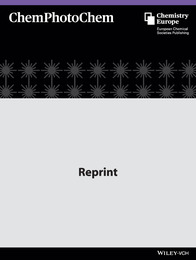Título :
Zinc Phthalocyanine Conjugated Dimers as Efficient Dopant-Free Hole Transporting Materials in Perovskite Solar Cells |
Autor :
Molina, Desiré
Ruiz-Preciado, Marco A.
Carlsen, Brian
Eickemeyer, Felix Thomas
Yang, Bowen
Flores-Díaz, Natalie
Álvaro-Martins, Maria João
Nonomura, Kazuteru
Hagfeldt, Anders
Sastre Santos, Angela |
Editor :
Wiley |
Departamento:
Departamentos de la UMH::Farmacología, Pediatría y Química Orgánica |
Fecha de publicación:
2020-01 |
URI :
https://hdl.handle.net/11000/37913 |
Resumen :
Four ZnPc-dimers with 2,5-thienyl (ZnPc@th@ZnPc 1), 2,7-
fluorenyl (ZnPc@flu@ZnPc 2), 3,6-bisthienylldiketopyrrolopyrrole
(ZnPc@DPP@ZnPc 3) and 1,4-phenyl (ZnPc@p@ZnPc 4) bridges
have been studied as dopant-free hole transporting materials
(HTMs) in perovskite solar cells (PSCs). The synthesis and
characterization of ZnPc@th@ZnPc 1 and ZnPc@flu@ZnPc 2
dimers are reported for the first time. Steady state and time
resolved photoluminescence demonstrate the good hole extraction capability of these materials. The best efficiencies
obtained for dimers 1, 2, 3 and 4 are 15.5%, 15.6%, 16.8% and
15.7%, respectively, without the addition of dopants. Besides,
these derivatives demonstrated better stability both in dark
storage conditions with a relative humidity <20% for 500 h
and at 50°C with a relative humidity >60% for 160 h when
compared to doped spiro@OMeTAD. The push-pull nature of
dimer ZnPc@DPP@ZnPc 3 has led to the highest efficiency
among the ZnPc derivatives under study demonstrating that
donor-acceptor-donor systems can be good alternatives to
commonly used materials due their energy levels, low cost and
the final morphology of the hole transporting layer.
|
Área de conocimiento :
CDU: Ciencias aplicadas: Medicina: Farmacología. Terapéutica. Toxicología. Radiología |
Tipo de documento :
info:eu-repo/semantics/article |
Derechos de acceso:
info:eu-repo/semantics/openAccess |
DOI :
https://doi.org/10.1002/cptc.201900245 |
Publicado en:
ChemPhotoChem, Volume4, Issue 4 (2020) |
Aparece en las colecciones:
Artículos - Farmacología, Pediatría y Química Orgánica
|
 La licencia se describe como: Atribución-NonComercial-NoDerivada 4.0 Internacional.
La licencia se describe como: Atribución-NonComercial-NoDerivada 4.0 Internacional.
.png)
